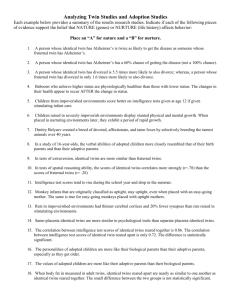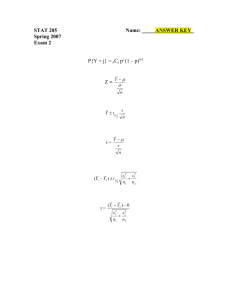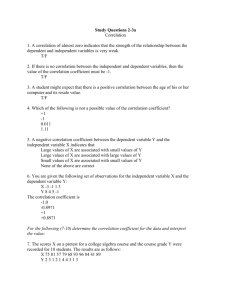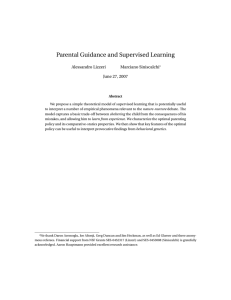Model answers for attachment mock
advertisement
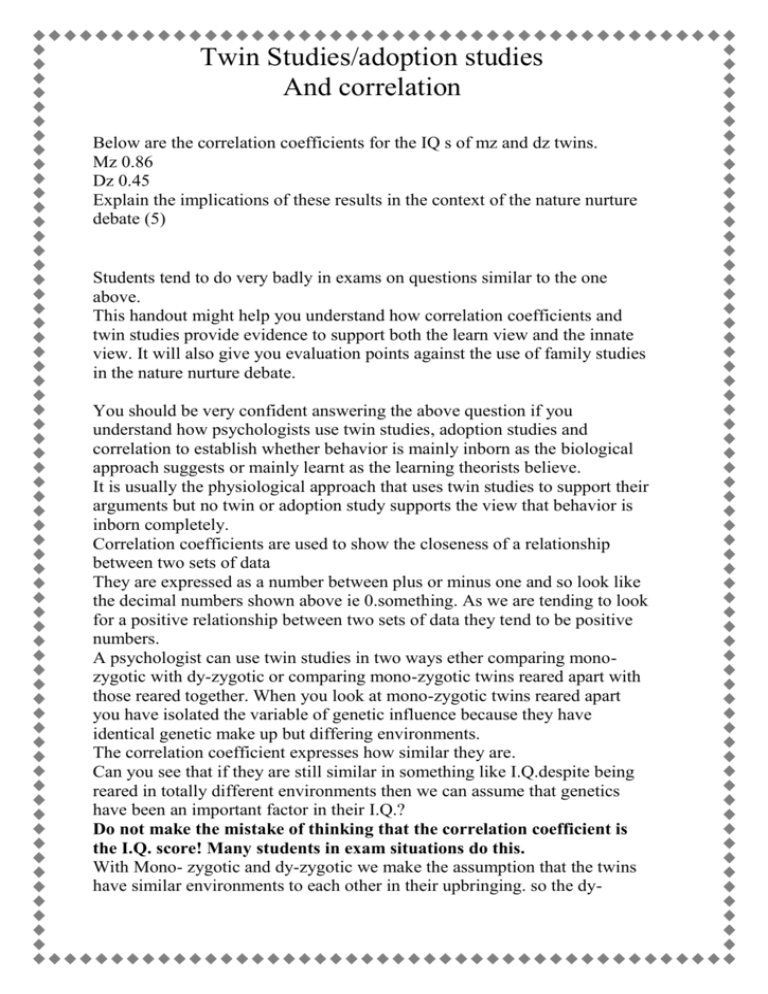
Twin Studies/adoption studies And correlation Below are the correlation coefficients for the IQ s of mz and dz twins. Mz 0.86 Dz 0.45 Explain the implications of these results in the context of the nature nurture debate (5) Students tend to do very badly in exams on questions similar to the one above. This handout might help you understand how correlation coefficients and twin studies provide evidence to support both the learn view and the innate view. It will also give you evaluation points against the use of family studies in the nature nurture debate. You should be very confident answering the above question if you understand how psychologists use twin studies, adoption studies and correlation to establish whether behavior is mainly inborn as the biological approach suggests or mainly learnt as the learning theorists believe. It is usually the physiological approach that uses twin studies to support their arguments but no twin or adoption study supports the view that behavior is inborn completely. Correlation coefficients are used to show the closeness of a relationship between two sets of data They are expressed as a number between plus or minus one and so look like the decimal numbers shown above ie 0.something. As we are tending to look for a positive relationship between two sets of data they tend to be positive numbers. A psychologist can use twin studies in two ways ether comparing monozygotic with dy-zygotic or comparing mono-zygotic twins reared apart with those reared together. When you look at mono-zygotic twins reared apart you have isolated the variable of genetic influence because they have identical genetic make up but differing environments. The correlation coefficient expresses how similar they are. Can you see that if they are still similar in something like I.Q.despite being reared in totally different environments then we can assume that genetics have been an important factor in their I.Q.? Do not make the mistake of thinking that the correlation coefficient is the I.Q. score! Many students in exam situations do this. With Mono- zygotic and dy-zygotic we make the assumption that the twins have similar environments to each other in their upbringing. so the dy- Twin Studies/adoption studies And correlation zygotic twins who are not identical will still be raised in a very similar way to each other. Therefore any difference in the correlation coefficient is likely to be due to genetics. Generally speaking psychologists have found that there are differences and that monozygotic twins are more similar as shown in the above figures. However clearly if I.Q. or other behaviors were 100% inborn the correlation coefficient would be plus 1 and it never is so we know that things such as I.Q. are not completely inborn. Strengths Produced a great deal of data to support biological arguments for causes of mental health problems enabling psychologists to find biological ways of helping people. Weakness Monozygotic twins are rarely separated from birth and raised in a totally different environment. This is really what is required to make the claims of the researchers truly valid. Mz twins reared together probably share a more similar rearing than dz twins reared together. (eg if you are not as good looking or charming as your none identical twin then your life and psychological development could be very different indeed) With regard to adoption studies we conduct the correlation on:Adopted child and biological mother Adopted child and adoptive mother If the biological view is to be supported, which pair would have the higher correlation coefficient? Strengths Adoption studies are a very powerful resource supporting the physiological view because you have isolated the environmental factors. If a biological mother has had no contact with the baby since birth and still matches I.Q. more than the adoptive mother this is powerful evidence that genes are more important than environment. Weakness Selective placement is a problem. Babies tend to be matched with a similar background to the one of the natural parents. Adopted children are not representative of all children. If an adoptive child has a lower I.Q. than the adoptive mother and matches the birth mother more in this respect it maybe that the trauma of adoption has lowered the child’s IQ not genetic factors. (Obviously this would only be the case if birth mother was lower than adoptive mother).

